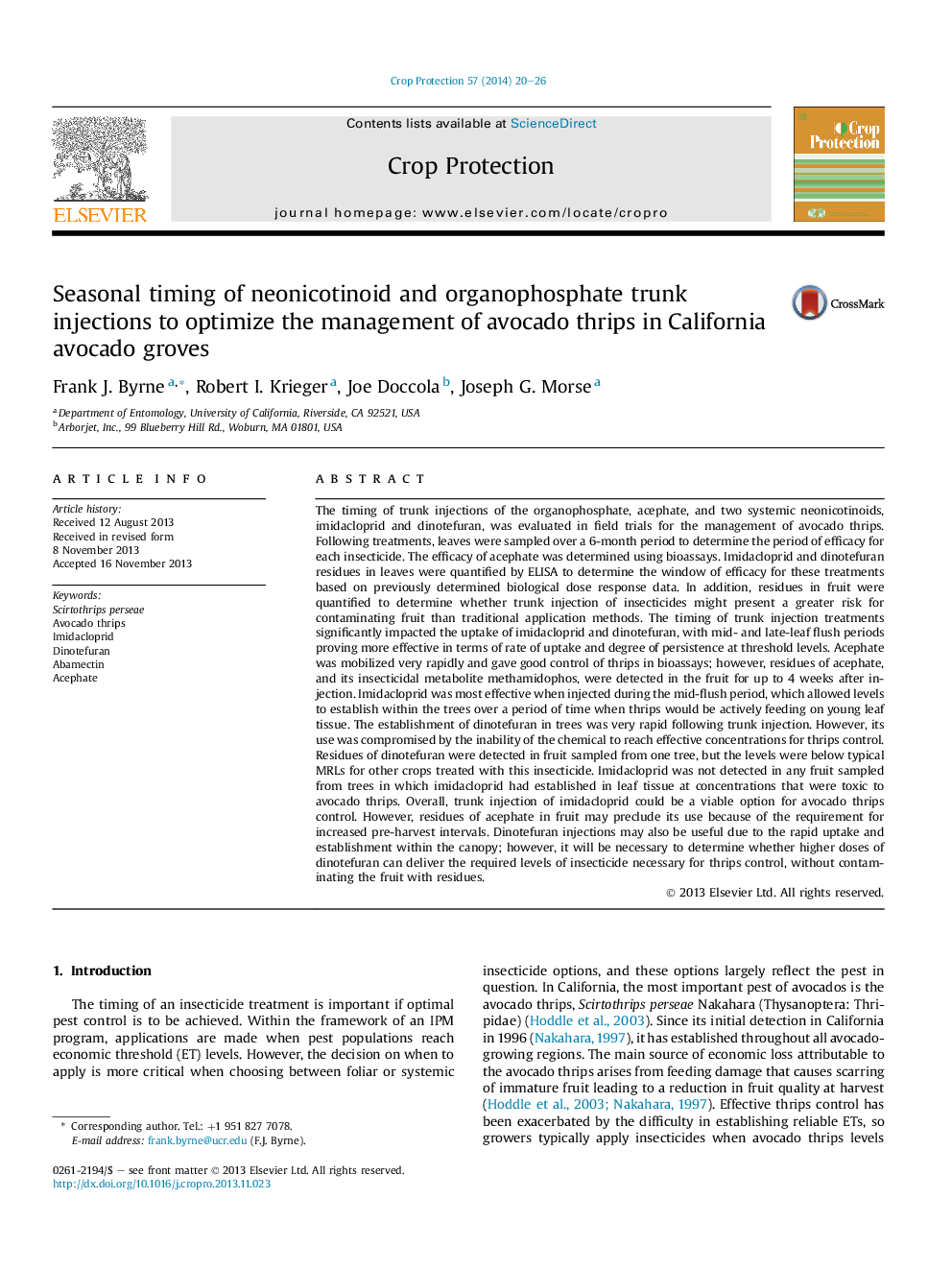| کد مقاله | کد نشریه | سال انتشار | مقاله انگلیسی | نسخه تمام متن |
|---|---|---|---|---|
| 4505957 | 1624330 | 2014 | 7 صفحه PDF | دانلود رایگان |
• The efficacy of trunk injections of pesticides against avocado thrips was evaluated.
• Different injection timings during spring flush were compared.
• The dynamics of imidacloprid and dinotefuran uptake and persistence differed.
• Acephate was very effective at all timings but residues were detected in fruit.
The timing of trunk injections of the organophosphate, acephate, and two systemic neonicotinoids, imidacloprid and dinotefuran, was evaluated in field trials for the management of avocado thrips. Following treatments, leaves were sampled over a 6-month period to determine the period of efficacy for each insecticide. The efficacy of acephate was determined using bioassays. Imidacloprid and dinotefuran residues in leaves were quantified by ELISA to determine the window of efficacy for these treatments based on previously determined biological dose response data. In addition, residues in fruit were quantified to determine whether trunk injection of insecticides might present a greater risk for contaminating fruit than traditional application methods. The timing of trunk injection treatments significantly impacted the uptake of imidacloprid and dinotefuran, with mid- and late-leaf flush periods proving more effective in terms of rate of uptake and degree of persistence at threshold levels. Acephate was mobilized very rapidly and gave good control of thrips in bioassays; however, residues of acephate, and its insecticidal metabolite methamidophos, were detected in the fruit for up to 4 weeks after injection. Imidacloprid was most effective when injected during the mid-flush period, which allowed levels to establish within the trees over a period of time when thrips would be actively feeding on young leaf tissue. The establishment of dinotefuran in trees was very rapid following trunk injection. However, its use was compromised by the inability of the chemical to reach effective concentrations for thrips control. Residues of dinotefuran were detected in fruit sampled from one tree, but the levels were below typical MRLs for other crops treated with this insecticide. Imidacloprid was not detected in any fruit sampled from trees in which imidacloprid had established in leaf tissue at concentrations that were toxic to avocado thrips. Overall, trunk injection of imidacloprid could be a viable option for avocado thrips control. However, residues of acephate in fruit may preclude its use because of the requirement for increased pre-harvest intervals. Dinotefuran injections may also be useful due to the rapid uptake and establishment within the canopy; however, it will be necessary to determine whether higher doses of dinotefuran can deliver the required levels of insecticide necessary for thrips control, without contaminating the fruit with residues.
Journal: Crop Protection - Volume 57, March 2014, Pages 20–26
